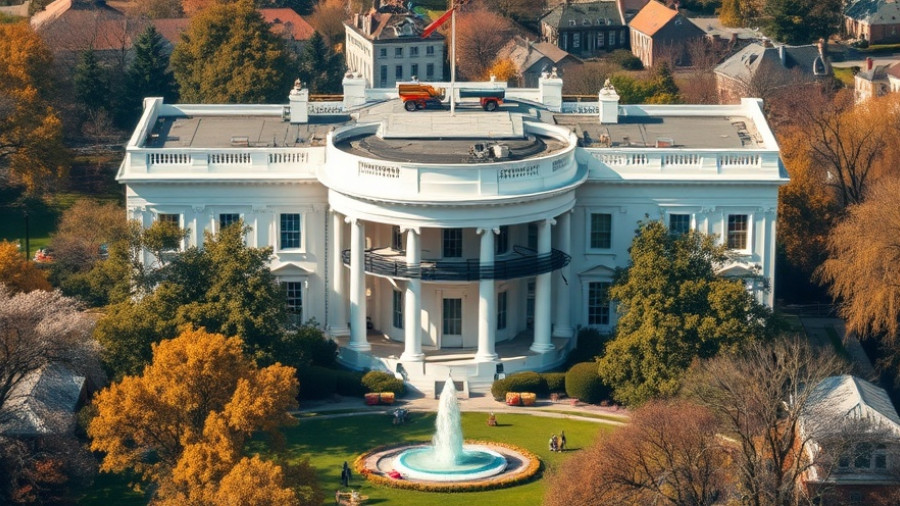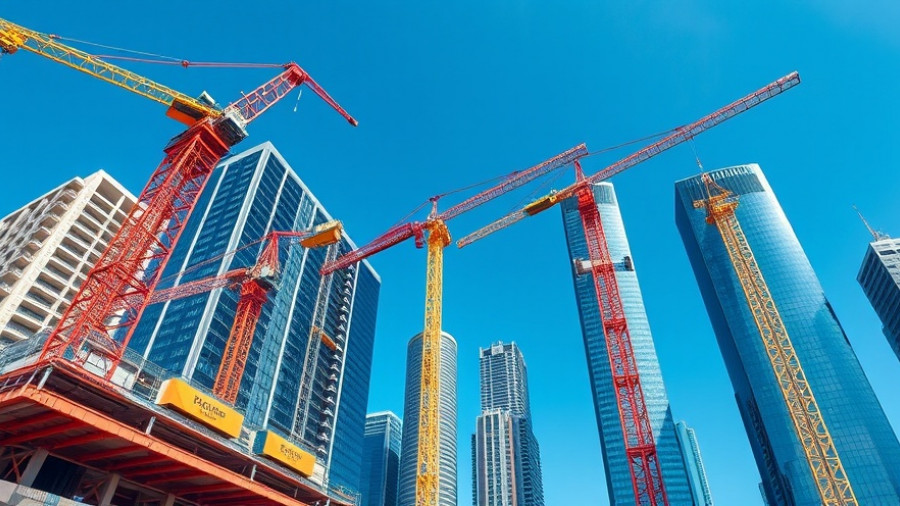
East Wing Transformation: Raising the Curtain on a New Era
The recent demolition of the East Wing of the White House marks a significant moment in American architecture and politics, as the Trump administration pushes forward with plans for a lavish new ballroom with a price tag of approximately $300 million. This ambitious project is more than just a physical transformation; it symbolizes the ongoing evolution of the White House as a social hub for state functions and formal gatherings. But why is this change deemed necessary, and what does it mean for the future of one of the most iconic buildings in the world?
From Necessity to Luxury: A Ballroom Fit for Presidents
According to the White House, this new ballroom is essential. The existing East Room can only accommodate about 200 guests, forcing many large-scale events to spill outside under temporary tents—hardly ideal for dignified gatherings. This upgrade, as represented by the ballroom's projected 90,000 square feet capable of hosting up to 999 guests, speaks to a long-standing aspiration shared by many past presidents for a more accommodating space.
As noted by architecture firm McCrery Architects, the design will reflect classical architectural styles while addressing contemporary needs. From a construction perspective, the project illustrates the challenges and opportunities of modernizing historic structures while retaining their unique heritage—a delicate balancing act for any architect.
The Risks and Rewards of High-Cost Projects
While the vision of a new ballroom may thrill social planners, the costs raise pertinent questions about priorities in governance—especially regarding taxpayer versus private funding. Interestingly, President Trump has asserted that the funding for this operation will come solely from private donors. While this alleviates direct taxpayer burden, the transparency regarding these contributions remains hotly debated.
Critics might argue that investing such a hefty sum into a lavish ballroom could detract from pressing societal needs. The symbolic gesture of upgrading governmental event spaces might spark dialogue around what attributes define a productive government—seating arrangements for state dinners or funding community development projects that impact everyday citizens?
A Lessons Learned from Past Projects
This isn't the first time a president galvanized substantial renovation efforts at the White House. Historically, notable leaders such as Harry Truman undertook extensive renovations to modernize the complex. Truman's complete gutting of the structure in the late 1940s was controversial but necessary due to safety concerns, leading to a renewed understanding of the demands placed on this iconic residence. Much like Truman's time, today's renovations require a careful overlay of innovation and respect for historical integrity.
The Bigger Picture: Setting Trends in Construction
This concrete development at the heart of American politics sheds light on broader trends in the construction industry—namely, how modern projects must contend with issues of sustainability, transparency, and technological integration. As construction companies engage with innovations in green building materials and energy-efficient systems, the juxtaposition of a grand ballroom against the backdrop of environmental stewardship presents a complex narrative.
Incorporating smart technologies into the design—such as automated lighting and climate control—will not only enhance operational efficiency but also align the ballroom with contemporary values of sustainability and elegance. Those in the commercial construction sector can learn valuable insights from this project, particularly as expectations and standards pivot towards greater accountability.
Your Role in the Future of Construction
For contractors and construction companies observing this high-stakes project, the lesson is clear: to thrive, they must adapt to changing societal priorities and elevate the discourse around construction to include more than just aesthetics. Future projects may increasingly demand integration with community values, a focus on environmental sustainability, and engagement with local populations to assure that every structure serves a greater purpose.
As we watch the ballroom take shape, the story remains about more than just bricks and mortar. It reflects the values of an administration, the aspirations of its citizens, and the trends that will shape the future of construction.
 Add Row
Add Row  Add
Add 




Write A Comment